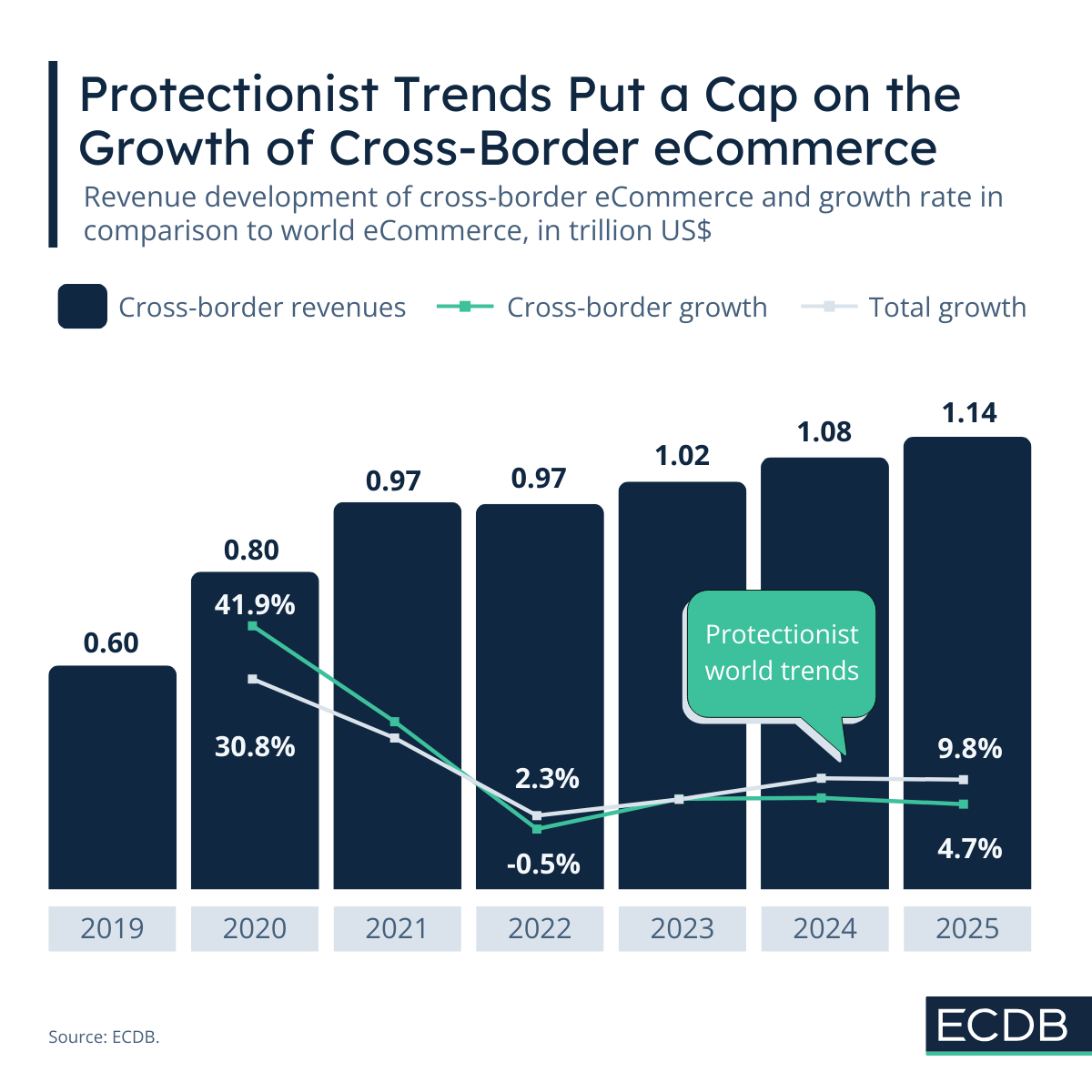Ever bought something online from another country because, after hours searching for that one item, you found it on that one site from across the globe? Or maybe just because the prices are lower? Whatever your reason for cross-border shopping, you are not alone.
Cross-border eCommerce powerfully contributes to the growing number of consumers and businesses that are connecting online. Compared to the overall market, however, cross-border eCommerce is still small. Its peaks and valleys were more pronounced in previous years, but cross-border growth is slower now. The reasons are mainly economic and political in nature.
Cross-Border eCommerce Experienced a Larger Boost During the Pandemic Years Than Overall eCommerce
Cross-border eCommerce is a fascinating topic, because it is highly dependent on global economic and political developments. Just five years ago, in 2020, the pandemic ravaged the world. It affected economic activity as retailers had to find additional channels to sell their products, primarily through eCommerce.
Cross-border eCommerce experienced a boost during this time, as it expanded the pool of consumers available to a seller. Around the same time, online marketplaces began to proliferate around the world. They created eCommerce structures in countries that were not yet well-established, and added another layer to more mature markets.
In both cases, online marketplaces allowed smaller businesses to sell products online without having to build their own digital platform. Cross-border eCommerce meant that these businesses could now easily sell to an international audience.
This is reflected in the growth rates of cross-border eCommerce: Compared to the overall eCommerce market, cross-border growth rates were higher during this period. More precisely, revenues increased by 41.9% from 2019 to 2020 (compared to 30.8% in the overall market) and by 21.9% from 2020 to 2021 (18.5%).
But at the same time, the downturn in the following years was more pronounced in cross-border eCommerce.
Protectionist Trends Around the World Put a Cap on the Development of Cross-Border eCommerce
The years following the pandemic were characterized by high inflation and supply chain disruptions. They especially affected cross-border eCommerce revenues, which declined by -0.5% from 2021 to 2022. The overall eCommerce market slowed down, but revenues still grew at a rate of 2.3%.
The recession in cross-border eCommerce was short-lived, however. By 2023, the sector had already surpassed the US$1 trillion revenue mark. But compared to the overall eCommerce market, cross-border revenues continue to grow at a slower rate. Again, this is closely tied to global political and economic developments.
While consumer spending has improved somewhat in the years since 2022, global trade has been subject to increasing tensions. This is due to a growing trend toward protectionism around the world, with the latest development in the U.S. presidency just one link in a global chain of developments. The call for higher import tariffs is a global phenomenon, not just from the U.S. government. Whatever its origin, it has a direct impact on cross-border eCommerce, which becomes less attractive when prices rise due to higher tariffs.
From a political standpoint, it is clear that lawmakers want to favor domestic retailers over lower-priced offers from international companies. This limits the potential development of cross-border eCommerce though, which is still growing, but at a significantly lower rate than overall eCommerce.










